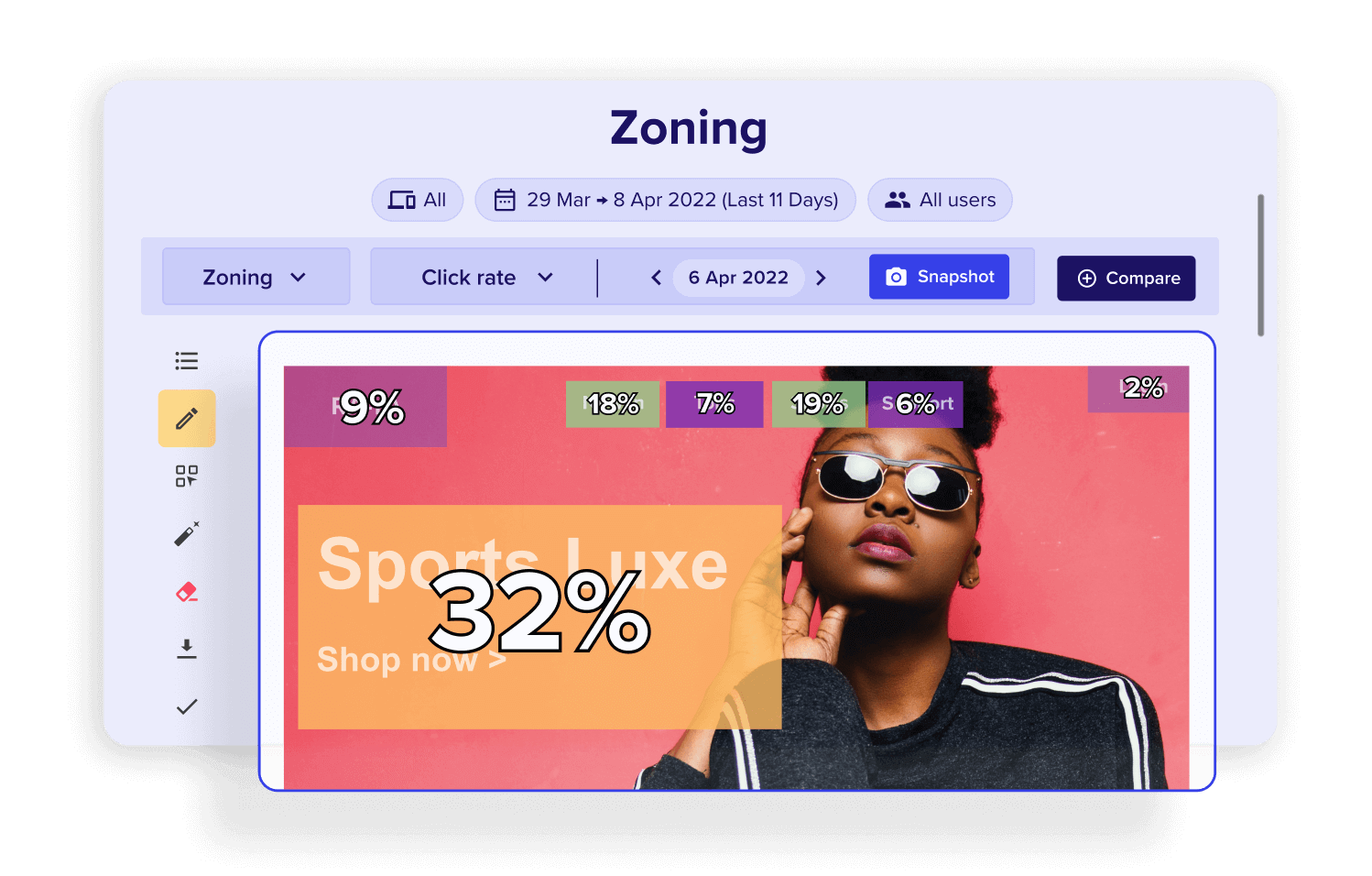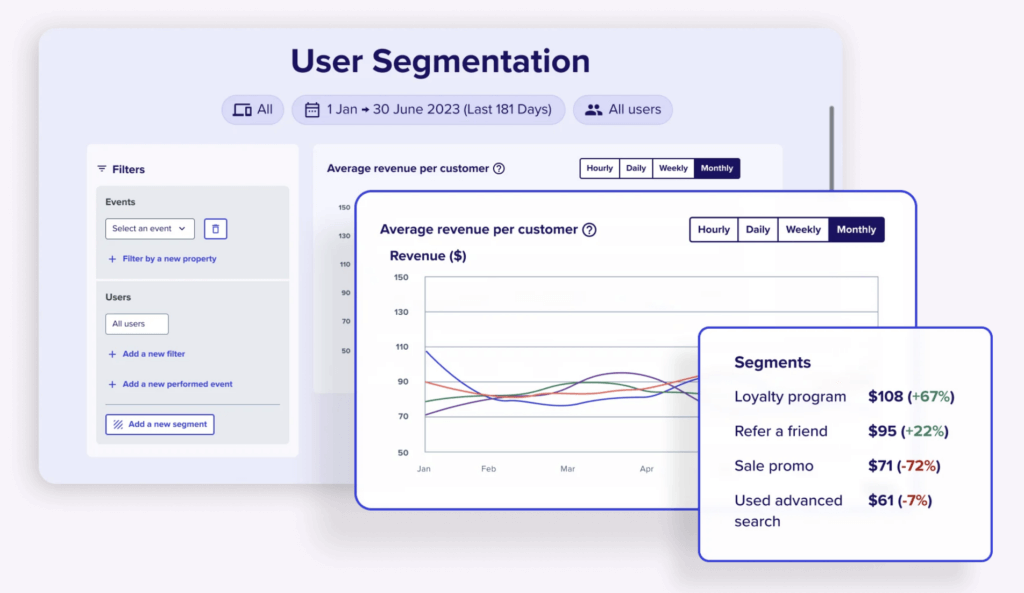
Partner Stories
How McCann Manchester partners with Contentsquare to understand (and improve) the customer journey
McCann Manchester is an industry-leading full-service marketing agency, specializing in conversion optimization and UX design.

What does McCann Manchester do?
McCann Manchester is part of Contentsquare’s Solution Partner Ecosystem. They provide a range of fully integrated marketing services for some of the UK’s largest brands, including Aldi, Matalan, and Kayak.
As one of the few organizations in the world with a Master Certified UX team and Certified Usability Analysts, they’re experts in eCommerce conversion research and UX design.
Using Contentsquare’s platform to perform customer journey analysis and provide data-driven insights, they enable you to deeply understand your customers and create better experiences for them—resulting in better results for your business, like increased conversions and customer happiness.
3 benefits of the Contentsquare and McCann Manchester partnership
Here are some ways McCann Manchester uses the Contentsquare platform to provide in-depth user insights and improve the digital experience for their clients’ end users.
-
01 Optimize the customer journey
Deeply understand every customer touchpoint from awareness to conversion and beyond—then make data-driven optimizations to reduce friction and spark delight.
-
02 Improve conversion rates
Make the most of eCommerce peak season by ensuring your website is performing at its best, removing blockers, and understanding what convinces visitors to convert.
-
03 Make it personal
Discover the motivations, preferences, and needs of different personas through in-depth research. Use these insights to create personalized customer journeys and experiences that speak directly to your target audience.



Use cases
Here are some ways McCann Manchester uses the Contentsquare platform to provide in-depth user insights and improve the digital experience for their clients’ end users.

Journey mapping
Customer journey analysis (or journey mapping) is the process of outlining each step someone takes before completing a goal, like making a purchase. This involves considering factors like
- How do people get to the website? (e.g. paid ads, organic search)
- What do they do between sessions?
- At which point do they convert?
- What is their complete journey from awareness all the way through to conversion? And how does this affect usage and retention?
"
Journey mapping is a fantastic technique that allows you to step away from the touchpoint that is the website and allows you to consider the broader customer experience."

Chris Callaghan
UX and Optimization Director
McCann Manchester

An example of a simple customer journey mapping matrix to be filled with data
To create a journey map, start with a blank matrix, either in person or using virtual whiteboarding tools. Map your journey stages (like awareness, consideration, and conversion) along the top and questions about customer motivations and opportunities along the bottom.
Then, it’s time to start populating your matrix with real data from across the business. “A lot of people jump into journey mapping and it’s all anecdotal or ‘I think this’—that’s an assumption map,” says Chris.
To ensure you get a 360° view, invite lots of stakeholders along to share their knowledge. Your data team, customer service team, and marketing team will all have unique perspectives, so bringing them together uncovers new opportunities beyond just your web analytics.

An example of a simple customer journey mapping matrix to be filled with data
You can fill in the columns with both quantitative and qualitative data from tools such as Zone-Based Heatmaps, Session Replays and Voice of Customer feedback like survey responses.
As you do this, you’ll identify gaps in the customer journey (i.e. blind spots where you need to do more research) as well as existing opportunities you can leverage.
While usability testing can be done both moderated and unmoderated, Chris and the McCann Manchester team recommend moderated. This enables you to get one-to-one insights from your customers and uncovers anxieties, friction, and motivations.
Use it to test prototypes, competitors, or key journeys on your website, or run an open test where you simply ask people to browse and navigate. In addition to revealing technical issues like slow site speeds and errors that can negatively impact conversions, usability testing highlights other impactful frustrations, like confusing navigation menus, irritating pop-ups, or poor search functionality.
What’s crucial is that at every stage, you constantly ask users why they did what they did—and dig deep. This will uncover an absolute treasure trove of information that you can’t get from quantitative tools or traditional web analytics tools.
Incorporate these insights into your customer segmentation strategy, using your learnings to craft personalized, targeted marketing campaigns, and user flows that cater to users’ needs based on actions they take.
Usability testing
Quantitative data tells you what people are doing, but usability testing reveals why people are doing it.
Usability testing is a research method in which you give users a specific goal or task to accomplish and monitor how they complete it. For example, for an eCommerce business, this might involve giving a test participant $50 and asking them to make a purchase on their website.

Participants provide ongoing updates as they engage with different touchpoints, giving you a holistic, long-term overview of the entire experience.
Chris argues that diary studies are one of the most underused tactics for understanding the customer experience, particularly when combined with journey mapping and usability testing. Together, they bridge the gap between your online and offline experiences and enable you to understand how customers are thinking and feeling between post-purchase and the actual product arriving.
These findings can then be brought upstream onto your website, allowing you to enrich the digital customer journey insights surfaced using the Contentsquare platform with additional real-world insights. By uniting your online and offline CX, you can create consistent experiences that delight your customers—and keep them coming back for more.
Customer experience (CX) diary studies
Diary studies involve getting participants to record their experiences with a brand, product, or service over a longer time period (such as a few weeks or months). 
Frequently Asked Questions
-
McCann Manchester is an integrated agency part of McCann Worldgroup, the Effie Index’s Most Effective Agency Network in the world, that provides a range of marketing services spanning all channels and disciplines.
-
McCann Manchester uses Contentsquare to capture user data about their clients’ digital experiences. With the Contentsquare platform, they’re able to monitor, analyze, and assess the performance of clients’ user experience (UX), and make data-driven recommendations for improving it—leading to increased conversions and long-term retention.
-
If you’re interested in becoming a Contentsquare Referral Partner, you can apply here.
Join the Contentsquare Referral Partner Program
Apply now to become a member of our partner ecosystem, upon approval you will receive everything you need in order to be successful.
Become a partner

